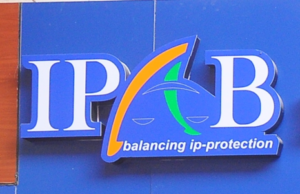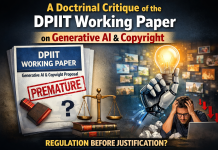This article is written by Lokesh Vyas and Angad Makkar.
Background
On April 4, 2021, the Tribunals Reforms (Rationalisation and Conditions of Service) Ordinance, 2021 (“the Tribunals Ordinance”) was promulgated which dissolved certain existing appellate bodies and transferred their functions (such as adjudication of appeals) to other existing judicial bodies. A similar bill was also introduced in Lok Sabha on February 13, 2021 and is currently pending further approval.
Under the Tribunals Ordinance, the appellate powers and duties of the Intellectual Property Appellate Board (“IPAB”) have been transferred to the High Courts and to Commercial Courts (for the purposes of disputes arising under or pursuant to the Copyrights Act, 1957). Not only restricted to the IPAB, the Ordinance also dissolved some other appellate bodies and transferred their functions to judicial bodies by bringing amendments in certain acts including, the Cinematograph Act, 1952, the Customs Act, 1962, the Airports Authority of India Act, 1994, the Trade Marks Act, 1999 and the Protection of Plant Varieties and Farmers’ Rights Act, 2001 and certain other Acts.
For the convenience of readers, the proposed changes are as follows:-
| Acts | Appellate body | Proposed entity |
| The Cinematograph Act, 1952 | Appellate Tribunal | High Court |
| The Trade Marks Act, 1999 | Appellate Board | High Court |
| The Copyright Act, 1957 | Appellate Board | Commercial Court or the Commercial Division of a High Court* |
| The Customs Act, 1962 | Authority for Advance Rulings | High Court |
| The Patents Act, 1970 | Appellate Board | High Court |
| The Airports Authority of India Act, 1994 | Airport Appellate Tribunal | Central government, for disputes arising from the disposal of properties left on airport premises by unauthorised occupants.
High Court, for appeals against orders of an eviction officer. |
| The Control of National Highways (Land and Traffic) Act, 2002 | Airport Appellate Tribunal | Civil Court# |
| The Geographical Indications of Goods (Registration and Protection) Act, 1999 | Appellate Board | High Court |
Source: PRS India
Tribunalization Ordinance is not a new or random legal event in India. Earlier in cases such as S.P Sampath Kumar v. Union of India; L. Chandra Kumar v. Union of India; Roger Mathew v. South Indian Bank Limited; Madras Bar Association v. Union of India; the issue has been debated. Before this ordinance, Tribunal Rules 2017 and 2020 also came. The Tribunal, Appellate Tribunal and other Authorities (Qualifications, Experience and other Conditions of Service of Members) Rules, 2017 (2017 Rules) were struck down by the Supreme Court in Rojer Mathew vs South Indian Bank Ltd on the ground that they are destructive of judicial independence, and are thus unconstitutional. Then came Tribunal, Appellate Tribunal and other Authorities (Qualifications, Experience and other Conditions of Service of Members) Rules, 2020 (2020 Rules) which also suffered from certain deficiencies similar to the 2017 Rules and was upheld with certain modifications by the SC in Madras High Court Bar Association v. Union of India (Read Praharsh’s post here).
Besides scrapping the IPAB, the Ordinance has made some fundamental changes in Section 184 of the Finance Act 2017, which is the fount of the Center’s power to make Rules relating to Tribunals and its members. We are not going into the details of those changes and their ramifications – interested readers can have a look at Livelaw article here. The present post provides a comprehensive analysis of the dissolution of the IPAB through the Tribunals Ordinance and presents a ‘for-against’ narrative of striking down IPAB. (Note: a detailed analysis of the IPAB issue and the extension of the tenure of chairperson has been covered by Ujjwal – here).
IPAB Case
The IPAB has been the subject of great debate and scrutiny for a lengthy period of time, and for many, its disbandment through the Tribunals Ordinance represents a much-needed shift towards more efficacious settlement of intellectual property-related disputes. The constitutionality of the IPAB has also been challenged in the past, notably through two PILs filed before the Madras High Court in 2011. It was asserted in these PILs that the modus operandi of appointments to the IPAB, and by extension the general functioning of the IPAB, amounts to a violation of the ‘separation of powers’ doctrine – insofar as the Executive is excessively involved in all operations of the IPAB. While deciding the petitions, the Madras High Court paid great heed to the ‘separation of powers’ doctrine and passed directions to restore the primacy of the Judiciary in terms of IPAB appointments. However, as shall be discussed below, the problems associated with the IPAB were far from resolved despite the Madras High Court’s decision. Nonetheless, there are both supporters and opposers of IPAB, and arguments in favour of and against the IPAB’s dissolution are outlined below. (IPAB’s powers and constitution are briefly covered here)
In Favour of the IPABs Dissolution
The IPAB has been criticised for a plethora of reasons since its inception in 2003, foremost amongst which is the inefficiency and time-lags in appointments as well as the lack of qualifications of the ‘technical members’ appointed to the IPAB. A lot of these issues were even highlighted by the Delhi High Court in its judgment dated 8 July 2019 in Mylan Laboratories Ltd. v. Union of India, wherein it was observed that a technical member for copyrights had not been appointed at all and that even the posts of technical members for trademarks and patents had been left vacant since 5 December 2018 and 4 May 2016 respectively. This in turn created an immense backlog of cases at the IPAB (with ~3935 cases pending adjudication before the IPAB across all its benches, as on the date of this judgment), as matters could not be heard without the appointment of the requisite technical members. The Court noted that the adverse impact of such delays in hearing with respect to intellectual property matters could be immense (given that patents and trademarks, for instance, have relatively limited periods of validity in the first place), and accordingly it invoked the ‘doctrine of necessity’ to assert that urgent matters could be heard by the Chairman of the IPAB along with the technical member (Plant Varieties Protection) until the other vacancies were filled. The glaring irony herein of course was that the proliferation of tribunals had been encouraged with the predominant purpose of alleviating the judicial backlog being faced by courts of law, and yet the disorganized functioning of the IPAB had instead become another issue to be resolved by a court of law.
Similarly, as Prashant pointed out that during its 17 years of existence, the IPAB did not have a Chairman for a cumulative total of 1,130 days. This time-gap was the culmination of lengthy periods of vacancy between the expiration of the term of the preceding Chairman and the appointment of his/her successor – which yet again boils down to sheer mismanagement and ineptitude. Even the appointments made to the IPAB can be, and have been, questioned in terms of qualifications and lack of any due diligence behind the same. For instance, it has been highlighted that one technical member was able to secure his appointment to the IPAB despite mentioning that he appeared as a counsel in an English case from the 19th century (read SpicyIP’s report here). Infrastructural issues faced by the IPAB, and geographical and financial limitations placed by the IPAB upon access to justice, insofar as it primarily functioned only out of two cities (viz Delhi and Chennai), are other glaring concerns that have been emphasised upon time and again in a bid to dissolve the IPAB.
Justice (Retd.) Prabha Sridevan, who was the Chairman of the IPAB from May 2011 to August 2013, has long been in favour of disbanding the IPAB and restoring jurisdiction to special IP benches of High Courts. Having been privy to the internal functioning of this quasi-judicial body for an extended period of time, her impassioned plea for its dissolution perhaps best illustrates the pressing need for a shift in order to (in her own words) “serve better the cause of justice, the intellectual property jurisprudence and the public interest.” In her interview with IndiaToday, she espoused a move away from the IPAB to the High Courts and said that “In cases of patents and pharma patents, public interest is a huge consideration. What a high court can do with its inherent powers, a tribunal that is circumscribed, cannot do. [In a tribunal], ideas like public interest and constitutional rights like access to health get defeated.” More interesting was her response on the question of already overburdened high courts now having to deal with more cases: “Every important case from the IPAB already goes to the high courts. People are not content with IPAB orders, which is why they approach high courts. Now, they will just directly go to the high courts. That’s the only difference.”
Against the IPAB Dissolution
Undoubtedly, there were issues with the IPAB as stated above, however, there were also certain good points attached to the existence of the IPAB (Read Arun’s brilliant post here). The IPAB was established in consonance with Article 41 of TRIPS) which prescribes an effective disposal of IP cases, (however, it does not mandate “to put in place a judicial system for the enforcement of intellectual property rights distinct from that for the enforcement of law in general” (Article 41.5). The primary justification of having the IPAB was anchored to the quick and effective adjudication of IP disputes by IP experts. Some strong arguments to scrap the IPAB were, as outlined above, ineffective qualification of members, vacancy of members, infrastructures, pending cases, inefficient adjudication of cases etc. However, if perused cautiously, these are not specifically limited to the IPAB. High Courts, too, are overburdened with cases (separately – read about India’s interesting AI Judge system) and suffer from severe judicial vacancies. While the vacancies in the IPAB are unavoidable issues, it is also important to emphasize the reasons behind it. One such reason is the prerogative of the government in the IPAB appointments.
As Arun argued, castigating the IPAB adjudication and then urging to shift its power to the High Courts is in a way contradictory because those who adjudicate IP matters in the IPAB are none other than the learned judges of the High Courts having relevant experience in commercial matters. The arguments of vacancy of the technical members in the IPAB for a particular period of time and having bureaucrats as technical members or the Vice-Chairpersons from the Indian Legal Service (ILS) or the Trade Marks Registry or the Patent Office, is to some extent genuine but it, in our opinion, does not call for the scrapping of the system altogether. Rather, it calls for the overhauling and the revamping of the system and demands a strong scrutiny in the matter.
Regarding the vacancies, Arun made an interesting point, which we have produced verbatim as follows:-
“The delay in appointments does of course jeopardize the statutory framework, but there remain significant workarounds. For instance, under the Patents Act, even if a challenge before the IPAB is pending, the invalidity of the patent is also a defence, which calls on the courts to independently examine the patent without any presumption of validity whatsoever. Even section 31 of the Trademarks Act stands considerably diluted today and the validity of several trademarks have been assaulted in numerous interim injunction applications. Transferring matters to the High Courts is only an illusory panacea. The Commercial Courts Act mandates that matters be finally disposed off within a year, which is even to the most cheerful optimist a pipe dream. The transferring of matters to the High Courts is not necessarily going to bring about disposal, and would add to an already clogged pipeline. A far easier fix is to strive for quicker appointments and better stakeholder involvement in the IPAB, which requires only some elbow grease and bureaucratic determination. Tribunals are designed for easier, cheaper and expert disposal, and the IPAB with a hybrid of judicial persons and technical members adjudicating, is conceptually rather sound. The IPAB also sees the active participation of lawyers apart from “court” counsels, who find the scheduling and procedures to be far less daunting. Anyone who has filed a rectification in the IPAB would affirm that the effort therein is a fraction of the effort expended in filing a suit in any High Court.”
With the IPAB, India was in count of countries with specific IP adjudicating bodies, but after the scrapping of the IPAB, international opprobrium is also anticipated (see here, and here). Chiding this move, Justice Manmohan Singh said that “The IPAB was created after amendments in the laws due to our commitment under the TRIPs Agreement. Other countries, clients may raise objections. Foreign solicitors and clients might question why IPAB was abolished.” Similarly, Senior advocate Abhishek Manu Singhvi, calling the ordinance as the government’s favorite dictatorial tool, remarked “This en masse and blanket abolition of diverse tribunals smacks of arbitrariness and blatant absence of application of mind. We created tribunals in the first place knowing the over clogged arteries of the high courts across the country. Secondly, that clogging has only increased because of over 33 percent of all judicial posts at the high court level are at any given time vacant and unfilled. Thirdly, matters of intellectual property are complex and expertise oriented and take much more time than normal other civil or criminal matters.”
Thus, on one hand, IPAB was fraught with flaws. On the other hand, it was expected to be revamped.
What about the Copyright Rules, 2021 then?
Intriguingly, before the notification of the Tribunals Ordinance, the Central Government notified the Copyright (Amendment) Rules, 2021 (“the Rules”). Pursuant to the Rules, the IPAB essentially replaced the erstwhile ‘Copyright Board’, and in doing so, the Copyright Rules were made consonant with the Copyright Act, 1957 (in which, references to ‘Copyright Board’ had been replaced with the IPAB through Section 160 of the Finance Act, 2017). Consequently, the Rules entrusted the IPAB with the powers and duties of the erstwhile Copyright Board, viz granting compulsory and statutory licenses, determining royalty rates, etc.
However, this now appears to be a redundant move by the Central Government, in light of the scrapping of the IPAB and the transfer of its key functions vis-a-vis Indian copyright law to Commercial Courts or the Commercial Division of a High Court. The consonance that was sought to be achieved (belatedly, as it may be) between the Copyright Act, 1957 and the Copyright Rules is yet again lost, and it remains to be seen as to whether another amendment to the Copyright Rules will be passed anytime soon to formally enforce the aforementioned transfer of powers away from the IPAB (although a de facto shift to this effect will inevitably take place upon the IPAB becoming defunct).
Concluding Remarks
The primary purpose of this post is not to rekindle the debate whether IPAB was a bane or boon, rather, it is to understand the present step of scrapping the system as whole and see what the future may hold. As commented by an anonymous reader on SpicyIP (though with an unwanted harsh tone) that we should wait for at least three years before concluding whether the present ordinance is any good for India’s IP regime or it will just burgeon the burden of courts.
Hope this move will be a pax in the I-Property Regime.
Image source: here












